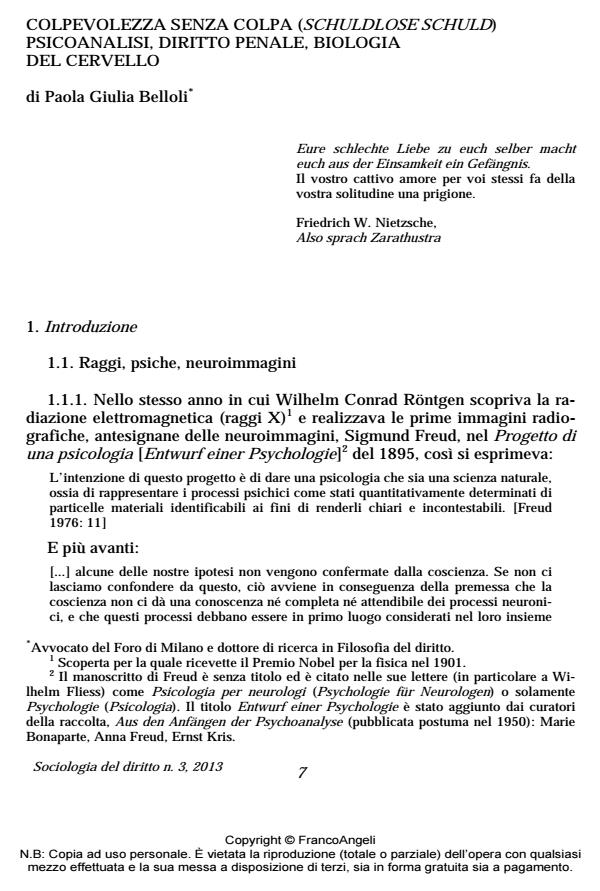Colpevolezza senza colpa (schuldlose schuld) psicoanalisi, diritto penale, biologia del cervello
Titolo Rivista SOCIOLOGIA DEL DIRITTO
Autori/Curatori Paola Giulia Belloli
Anno di pubblicazione 2014 Fascicolo 2013/3
Lingua Italiano Numero pagine 21 P. 7-27 Dimensione file 562 KB
DOI 10.3280/SD2013-003001
Il DOI è il codice a barre della proprietà intellettuale: per saperne di più
clicca qui
Qui sotto puoi vedere in anteprima la prima pagina di questo articolo.
Se questo articolo ti interessa, lo puoi acquistare (e scaricare in formato pdf) seguendo le facili indicazioni per acquistare il download credit. Acquista Download Credits per scaricare questo Articolo in formato PDF

FrancoAngeli è membro della Publishers International Linking Association, Inc (PILA)associazione indipendente e non profit per facilitare (attraverso i servizi tecnologici implementati da CrossRef.org) l’accesso degli studiosi ai contenuti digitali nelle pubblicazioni professionali e scientifiche
Nel 1895, quando Röntgen realizzava le prime immagini radiografiche, antesignane delle neuroimmagini, Freud scriveva il Progetto di una psicologia con cui intendeva rendere la psicologia una "scienza naturale", capace di rappresentare i processi psichici come stati quantitativamente determinati di particelle. Nel 1920, nel pur mutato scenario, auspicava le stupefacenti rivelazioni dei metodi di indagine biologica a sostegno/ verifica delle sue ipotesi. Con riguardo alle intuizioni psicoanalitiche rilevanti per il diritto penale, quali la teoria dei delinquenti per senso di colpa, la questione oggi è se le attuali neuroscienze cognitive costituiscano quei nuovi metodi d’indagine prefigurati da Freud per offrire il fondamento biologico alle sue teorie. Nell’articolo si fa riferimento a recenti studi di biologia del cervello che indagano le basi della moralità e ad altri che tentano di capire dove risieda, se esiste, l’inconscio freudiano e quali siano le sue proprietà neurobiologiche.
Parole chiave:Diritto penale - Colpa - Colpevolezza - Neuroscienze - Psicoanalisi - Biologia del cervello
Paola Giulia Belloli, Colpevolezza senza colpa (schuldlose schuld) psicoanalisi, diritto penale, biologia del cervello in "SOCIOLOGIA DEL DIRITTO " 3/2013, pp 7-27, DOI: 10.3280/SD2013-003001